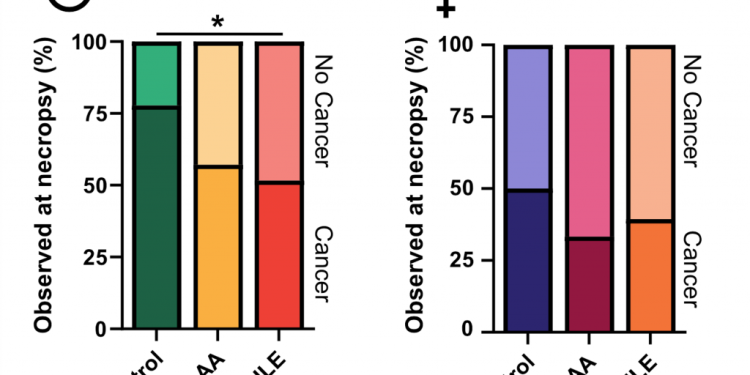A study published in Cell Metabolism reveals that limiting the consumption of isoleucine, an essential amino acid, can considerably slow down aging and prolong the lifespan of mice. This discovery aroused the interest of researchers, raising the question of whether similar food strategies could improve human longevity and overall health.
Isoleucine is one of the three branched chain amino acids essential to the construction of proteins in the body. Although crucial for survival, it must be obtained by food sources such as eggs, dairy products, soy proteins and meats, because the body cannot synthesize it. However, the study suggests that the moderation of isoleucine consumption could be essential to promote healthy aging.
Previous research had already referred to a link between consumption of isoleucine and metabolic health. The data of a survey conducted in 2016-2017 with residents of Wisconsin showed that people with a higher body mass (BMI) tend to consume more isoleucine. These results laid the foundations for the recent investigation into its impact on aging.
Dudley Lamming, metabolism researcher at the University of Wisconsin and contributor to the two studies, notes: “Different components of your diet have a value and an impact beyond their calorie function, and we have studied a component than many people maybe I eat too much.
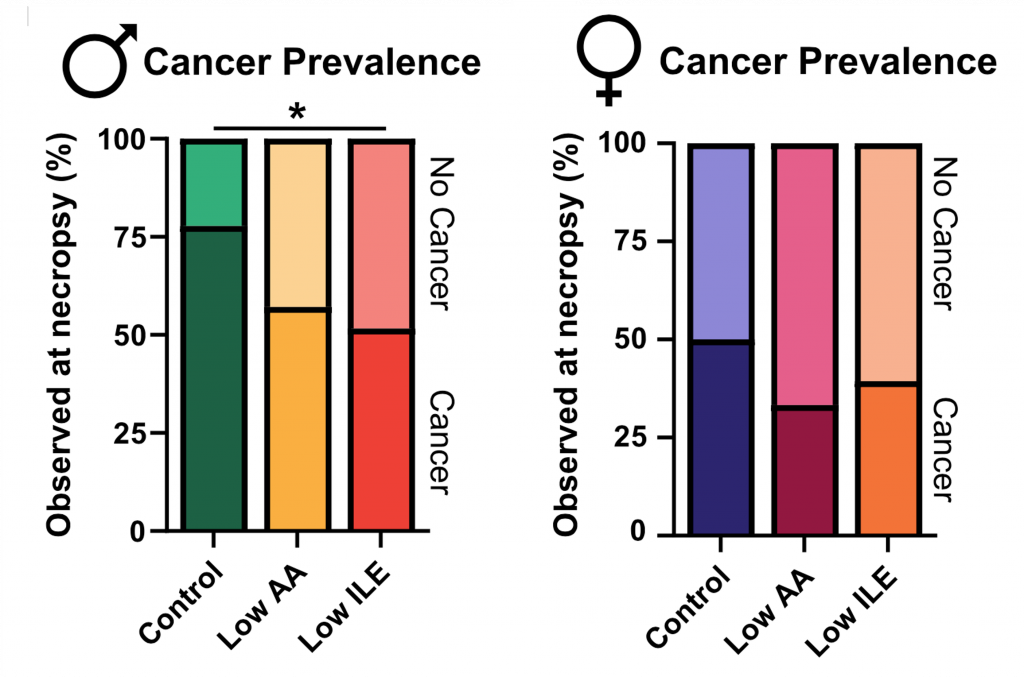
The study highlights a promising track: reducing the consumption of isoleucine could improve both lifespan and “lifespan”, even when food changes are made later in life. This opens up possibilities of intervention aimed at improving the quality of life of the elderly.
Research focused on a genetically diversified group of mouse, divided into three food groups. A group served as a witness, consuming a diet containing the 20 standard current amino acids. The researchers observed that mice having a limited intake of isoleucine presented significant improvements in aging markers and longevity.
This discovery highlights the potential of food interventions to influence health and longevity, paving the way for future studies exploring the way in which these results could result in humans.
The second group had all the amino acids reduced by about two thirds, while the third group had only the isoleucine reduced in the same proportion. The mice, of age equivalent to a 30 -year -old human, were free to eat as much as they wanted, but only from the specific type of food provided to their respective groups.
Remarkably, the restriction of food isoleucine has resulted in many positive effects on the health and longevity of mice. This has increased their lifespan, improved their overall health, reduces fragility and favored thinness and glycemic control.
Males mice experienced a remarkable increase of 33 percent of their lifespan compared to their counterparts whose consumption of isoleucine was not limited, while female mice benefited from an increase of 7 percent.
These mice have presented significant improvements in 26 health measures, including improved muscular strength, increased endurance, better control of blood sugar, improved tail function and reduced hair loss. In particular, the male mouses of the group with low isoleucine content presented an enlargement of prostate linked to lower age and a reduced probability of developing cancer tumors, a common phenomenon in various strains of mice.
An unexpected twist in the study was that mice having a limited consumption of isoleucine actually consumed more calories than their counterparts. Despite the increase in their calorie contribution, they managed to burn more energy and maintain a leaner body weight, even if their level of physical activity has remained unchanged.
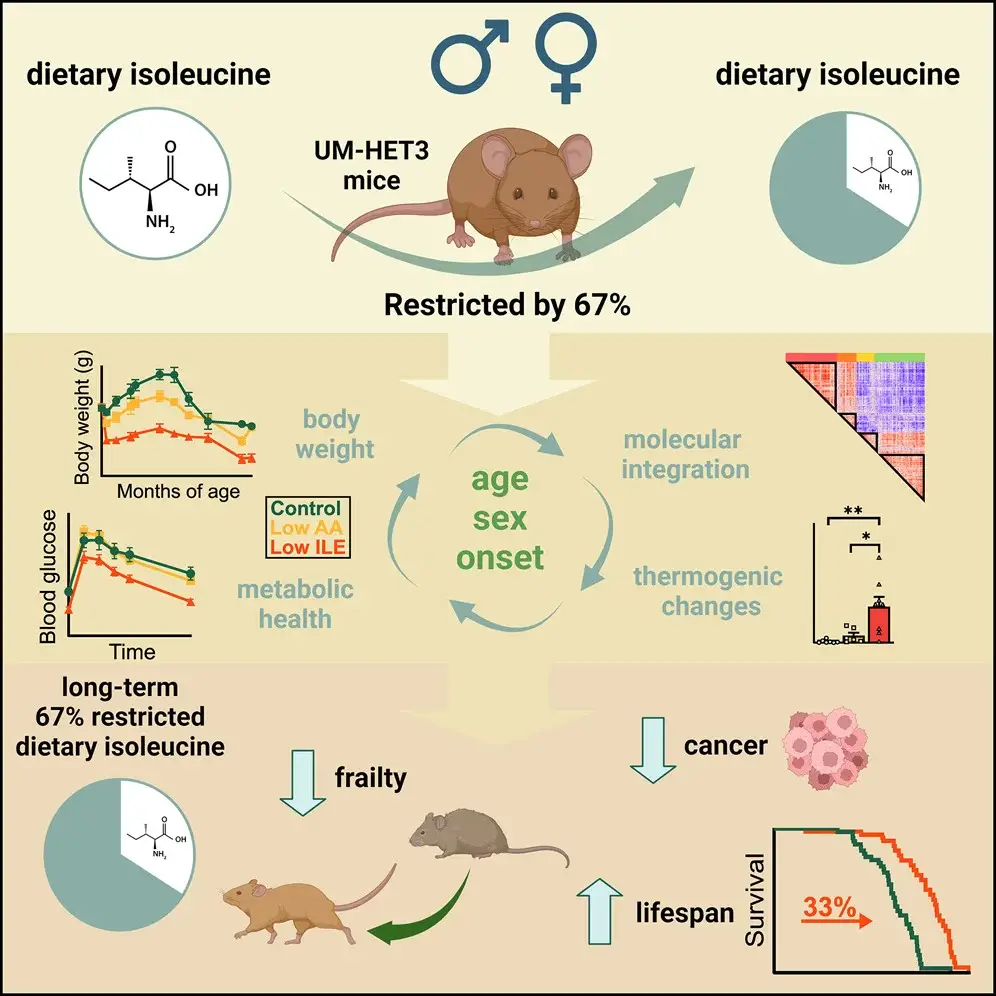
The implications of this research extend beyond the world of mice, raising the enticing perspective of similar anti-aging effects in humans. However, as with all studies involving mice, there are important challenges to be overcome before translating these results in practical applications in humans.
Food is a complex chemical reaction within the body and it is likely that other food components play a crucial role in obtaining the results observed.
For example, it has been shown that the general restriction of proteins has harmful effects on mice and humans. Consequently, applying these results to the real world is more complex than simply reducing the consumption of protein -rich foods, despite the simplicity of limiting the consumption of isoleucine.
The researchers point out that the level of amino acid restriction has remained constant in all experiences. They recognize that additional adjustments could be necessary to optimize the effects on different mouse strains and on different sexes, stressing that in diet, there is no universal solution.
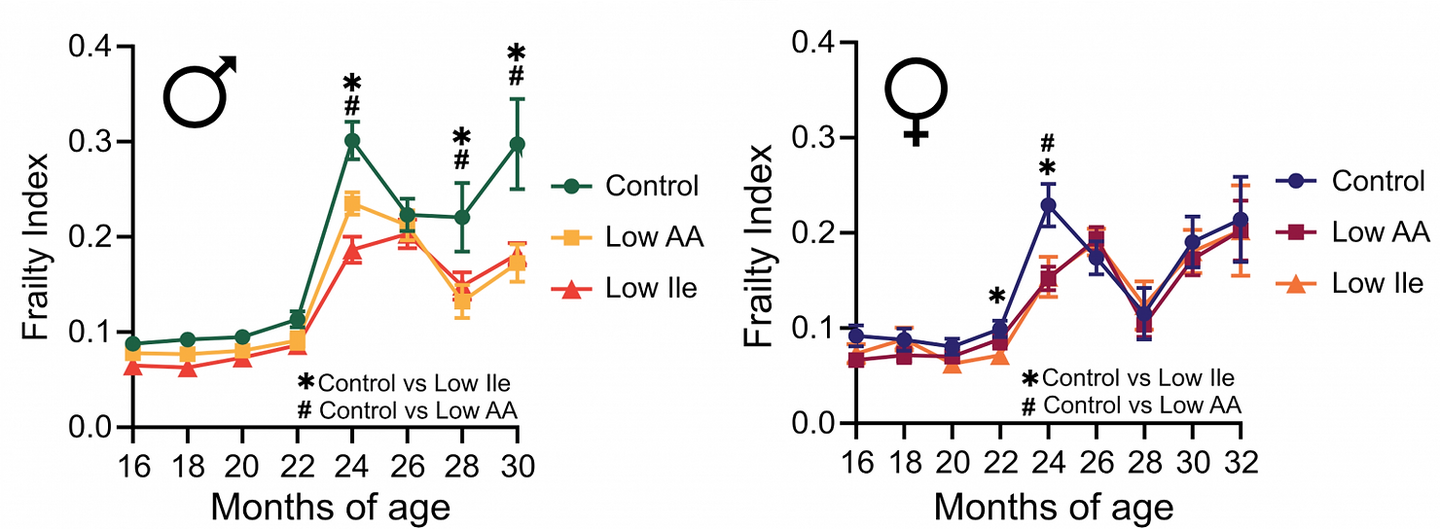
Dudley Lamming underlines the complexity of the problem by declaring: “We cannot simply have everyone adopted a diet poor in isoleucine. However, it remains optimistic, suggesting that isolation of the advantages of a single amino acid brings us closer to understanding the underlying biological processes and the potential development of humans, such as drugs blocking isoleucine .
10 current foods that contain significant amounts of isoleucine:
Chicken: Chicken is a rich source of isoleucine, a cooked chicken breast containing approximately 2.7 grams of isoleucine.
Beef: Beef is another good source of isoleucine, a cooked beef steak containing approximately 2.4 grams of isoleucine.

Pork: Pork is also a good source of isoleucine, a cooked pork chop containing approximately 2.2 grams of isoleucine.
Fish: Fish like salmon, tuna and cod are good sources of isoleucine. A cooked salmon fillet contains approximately 2.3 grams of isoleucine, a cooked tuna steak contains approximately 2.1 grams of isoleucine and a cod net contains approximately 1.8 grams of isoleucine.
Eggs: Eggs are a good source of isoleucine, a large egg containing about 1.4 grams of isoleucine.
Milkman: Dairy products such as milk, cheese and yogurt are good sources of isoleucine. A cup of milk contains approximately 1.2 gram of isoleucine, an ounce of cheese contains approximately 1.0 grams of isoleucine and a cup of yogurt contains approximately 0.8 grams of isoleucine.
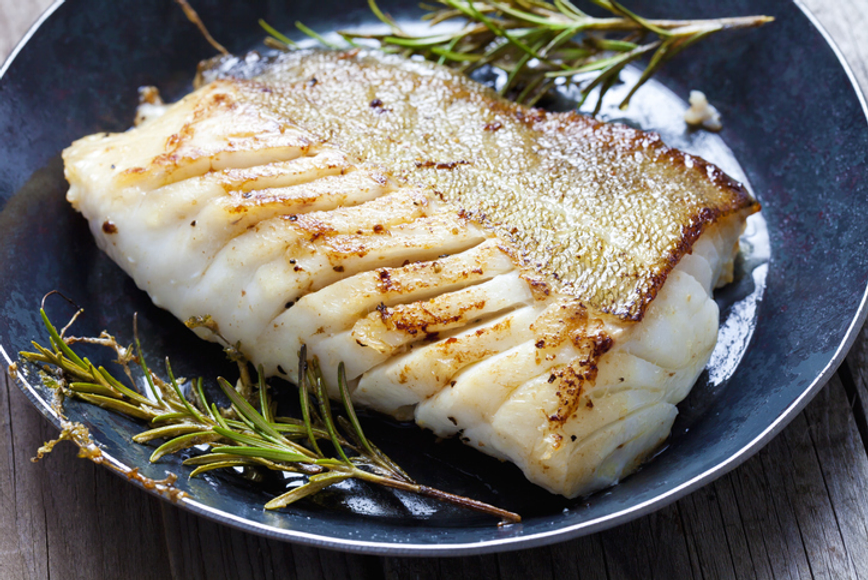
Legumes: Legumes such as beans, lenses and peas are good sources of isoleucine. A cup of cooked beans contains approximately 1.5 grams of isoleucine, a cup of cooked lenses contains approximately 1.3 grams of isoleucine and a cup of cooked peas contains approximately 1.1 gram of isoleucine.
Nuts and seeds: Nuts and seeds are good sources of isoleucine. An ounce of almonds contains approximately 1.4 grams of isoleucine, an ounce of sunflower seeds contains approximately 1.2 grams of isoleucine and an ounce of peanut contains approximately 0.9 grams of isoleucine.
Whole cereals: Wonderful grains are good sources of isoleucine. A slice of whole wheat bread contains approximately 0.5 gram of isoleucine, a cup of cooked oatmeal flakes contains approximately 0.4 gram of isoleucine and a cup of cooked brown rice contains approximately 0.3 grams of isoleucine .
Lawyers: Avocats are a good source of isoleucine, an avocado containing approximately 0.6 grams of isoleucine.
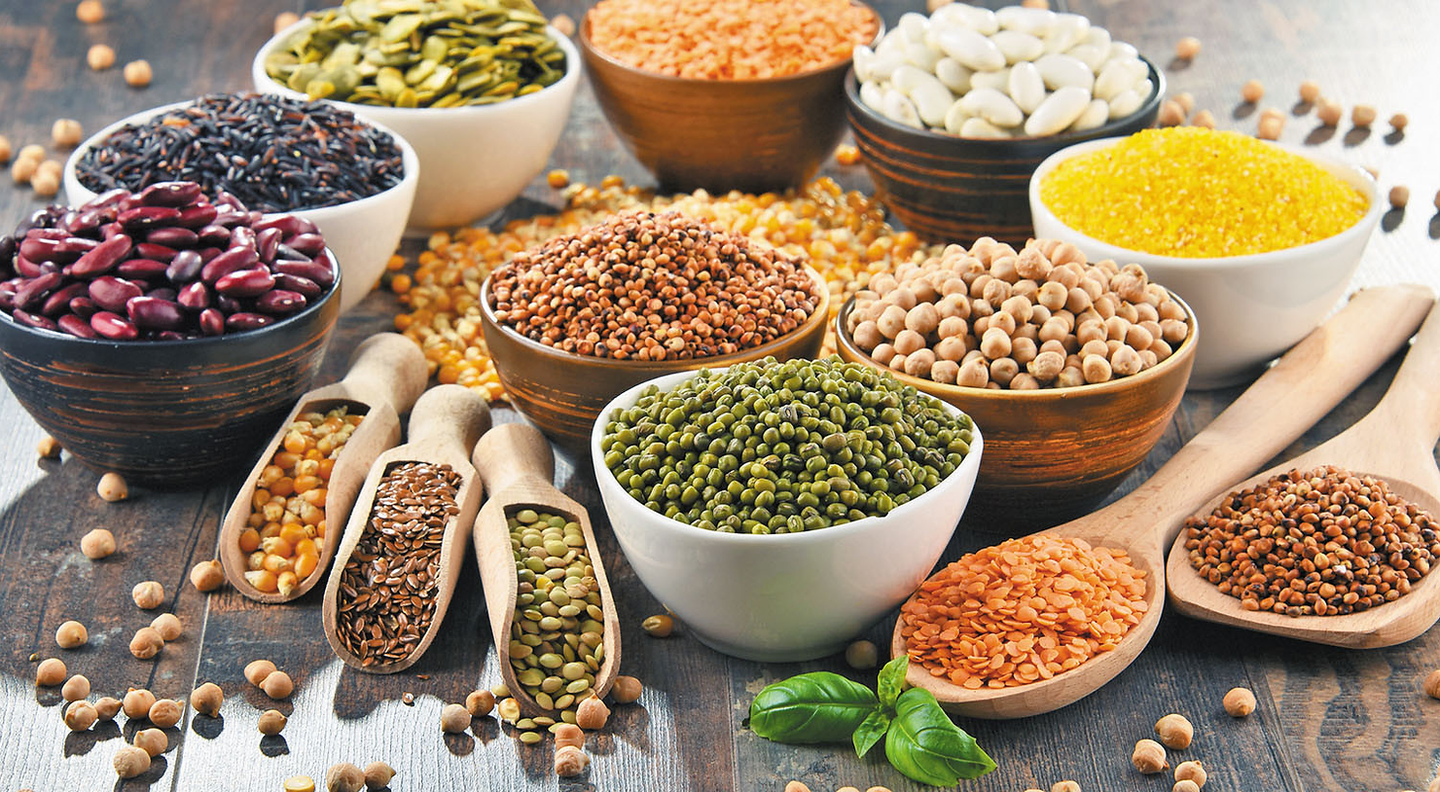
These revolutionary discoveries have opened new ways of research on aging and longevity. Although the path leading to the application of these discoveries to man can be difficult and uncertain, the prospect of improving health and prolonging the lifespan thanks to dietary interventions has never seemed so close to the realization.
While scientists continue to unravel the mysteries of aging, the promise of a longer and healthy life remains an attractive possibility on the horizon.

